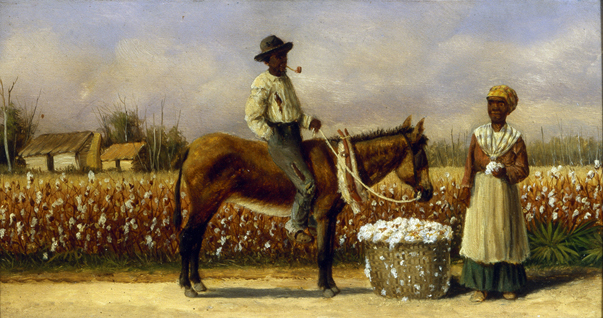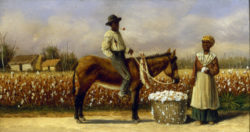William Aiken Walker
Working in various Southern locations including New Orleans, painter William Aker Walker created small-scale works for tourists and large-scale, more stylized paintings for wealthy clients.

Courtesy of The Historic New Orleans Collection
Sharecropper on a Mule. Walker, William Aiken (Artist)
Just before the start of the Civil War, William Aiken Walker began to paint African American street vendors and field hands in the city in which the conflict began, his hometown of Charleston, South Carolina. Known for a mix of Barbizon School-inspired natural realism and a patronizing racism, Walker’s body of work is notable for its focus on a race and class rarely seen in paintings of his era, but his paintings often relied on an offensive degree of caricature. Often working at various Southern resorts and in New Orleans, Walker created small-scale works (typically rural cabin scenes) for tourists, and large-scale, more stylized paintings for wealthy clients that were also mass-produced by the New York City printmaking firm of Currier & Ives between 1883 and 1885. Walker’s paintings are typically divided into three planes: a strongly defined foreground with workers, an expansive view of cotton fields behind them, and minute details such as a steamboat in the background.
